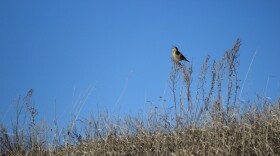I was recently perusing through Theodore Roosevelt’s book “Ranch Life and the Hunting Trail” (1888), and ran across his description of burning coal veins. He wrote that the burning coal veins were one of the more interesting features of the badlands. Some of them were noticeable from miles away. He also noted that the burning coal veins would burn for a while, burn out, and then new ones would start up. Here is his description of them:
“A strong smell of sulfur hangs ‘round them, the heated earth crumbles and cracks, and through the long clefts that form in it we can see the lurid glow of the subterranean fires, with here and there tongues of blue- or cherry-colored flames dancing up to the surface.”
The coal, North Dakota lignite, is a low-grade coal that is high in sulfur. It is found mostly in the western part of the state, particularly southwest of the Missouri River. Where the lignite seams are exposed on the soil surface, they may catch fire due to lightning or perhaps spontaneous combustion.
Plus, Native Americans burned the prairie a lot for a variety of reasons — including to improve forage, attract game (such as the bison), ease travel, eliminate the signs of their activity, or signal a warning.
And of course, prairie fires still occur, natural or anthropogenic. I have not heard anything specific, but I suspect that some lignite beds may have caught fire from the many grassland fires in western North Dakota last summer. It should be noted that what North Dakotans know as "scoria," or more accurately "clinker," is sediment that has been baked by the heat of these burned lignite beds.
Perhaps the most widely known example of this phenomenon is the burning coal vein located around 15 miles north and west of Amidon, or around 30 miles south of Medora on East River Road. A campground is now located there, as well. The burning coal vein was first noted in the 1880s and continued to burn and smolder until the late 1970s or perhaps early 1980s.
More Information
- Coal Outcrop Fire Suppression in the North Dakota Badlands (ND Public Service Commission)





